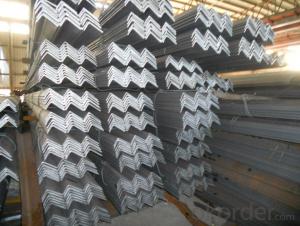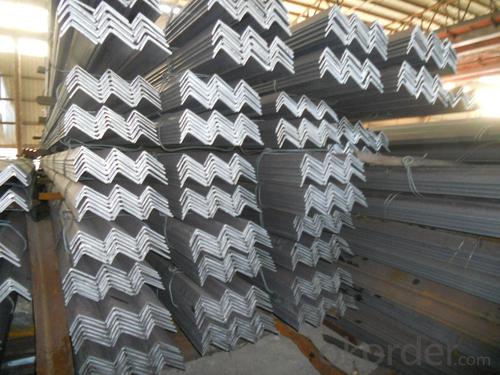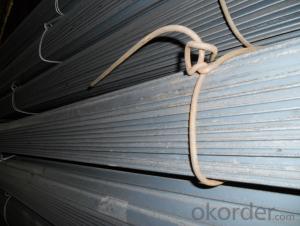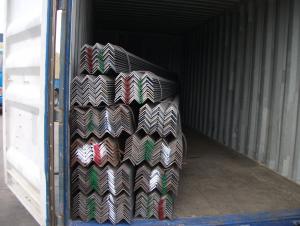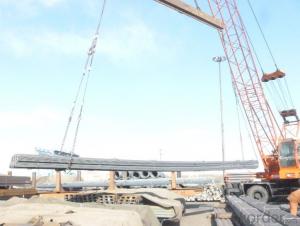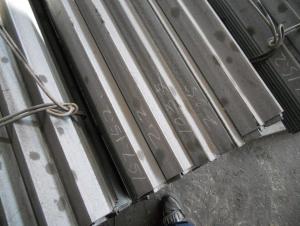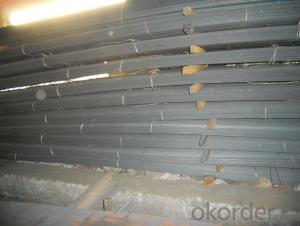High Quality Hot Rolled Carbon Steel Equal Angle
- Loading Port:
- Tianjin
- Payment Terms:
- TT or LC
- Min Order Qty:
- 20 m.t.
- Supply Capability:
- 1000 m.t./month
OKorder Service Pledge
OKorder Financial Service
You Might Also Like
Product Description:
OKorder is offering Hot Rolled Carbon Steel Equal Angle at great prices with worldwide shipping. Our supplier is a world-class manufacturer of steel, with our products utilized the world over. OKorder annually supplies products to European, North American and Asian markets. We provide quotations within 24 hours of receiving an inquiry and guarantee competitive prices.
Product Applications:
According to the needs of different structures, Angle can compose to different force support component, and also can be the connections between components. It is widely used in various building structures and engineering structures such as roof beams, bridges, transmission towers, hoisting machinery and transport machinery, ships, industrial furnaces, reaction tower, container frame and warehouse etc.
Product Advantages:
OKorder's Equal Angle are durable, strong, and resist corrosion.
Main Product Features:
· Premium quality
· Prompt delivery & seaworthy packing (30 days after receiving deposit)
· Corrosion resistance
· Can be recycled and reused
· Mill test certification
· Professional Service
· Competitive pricing
Product Specifications:
1. Invoicing on theoretical weight or actual weight as customer request
2. Length: 6m, 9m, 12m as following table
3. Sizes
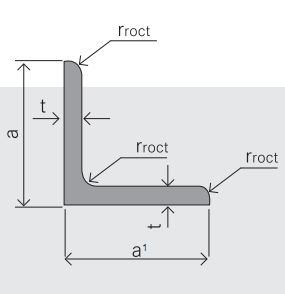
Sizes: 25mm-250mm | ||
a*t | ||
25*2.5-4.0 | 70*6.0-9.0 | 130*9.0-15 |
30*2.5-6.6 | 75*6.0-9.0 | 140*10-14 |
36*3.0-5.0 | 80*5.0-10 | 150*10-20 |
38*2.3-6.0 | 90*7.0-10 | 160*10-16 |
40*3.0-5.0 | 100*6.0-12 | 175*12-15 |
45*4.0-6.0 | 110*8.0-10 | 180*12-18 |
50*4.0-6.0 | 120*6.0-15 | 200*14-25 |
60*4.0-8.0 | 125*8.0-14 | 250*25 |
4.Material details:
Alloy No | Grade | Element (%) | |||||
C | Mn | S | P | Si | |||
Q235 | B | 0.12—0.20 | 0.3—0.7 | ≤0.045 | ≤0.045 | ≤0.3 | |
Alloy No | Grade | Yielding strength point( Mpa) | |||||
Thickness (mm) | |||||||
≤16 | >16--40 | >40--60 | >60--100 | ||||
≥ | |||||||
Q235 | B | 235 | 225 | 215 | 205 | ||
Alloy No | Grade | Tensile strength (Mpa) | Elongation after fracture (%) | ||||
Thickness (mm) | |||||||
≤16 | >16--40 | >40--60 | >60--100 | ||||
≥ | |||||||
Q235 | B | 375--500 | 26 | 25 | 24 | 23 | |
FAQ:
Q1: Why buy Materials & Equipment from OKorder.com?
A1: All products offered byOKorder.com are carefully selected from China's most reliable manufacturing enterprises. Through its ISO certifications, OKorder.com adheres to the highest standards and a commitment to supply chain safety and customer satisfaction.
Q2: How do we guarantee the quality of our products?
A2: We have established an advanced quality management system which conducts strict quality tests at every step, from raw materials to the final product. At the same time, we provide extensive follow-up service assurances as required.
Q3: How soon can we receive the product after purchase?
A3: Within three days of placing an order, we will begin production. The specific shipping date is dependent upon international and government factors, but is typically 7 to 10 workdays.
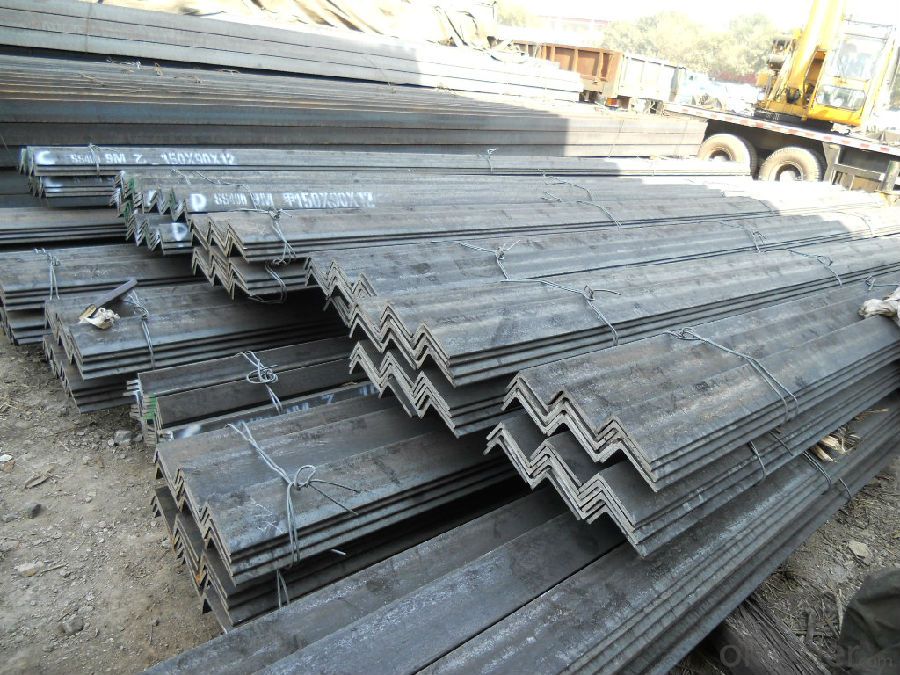
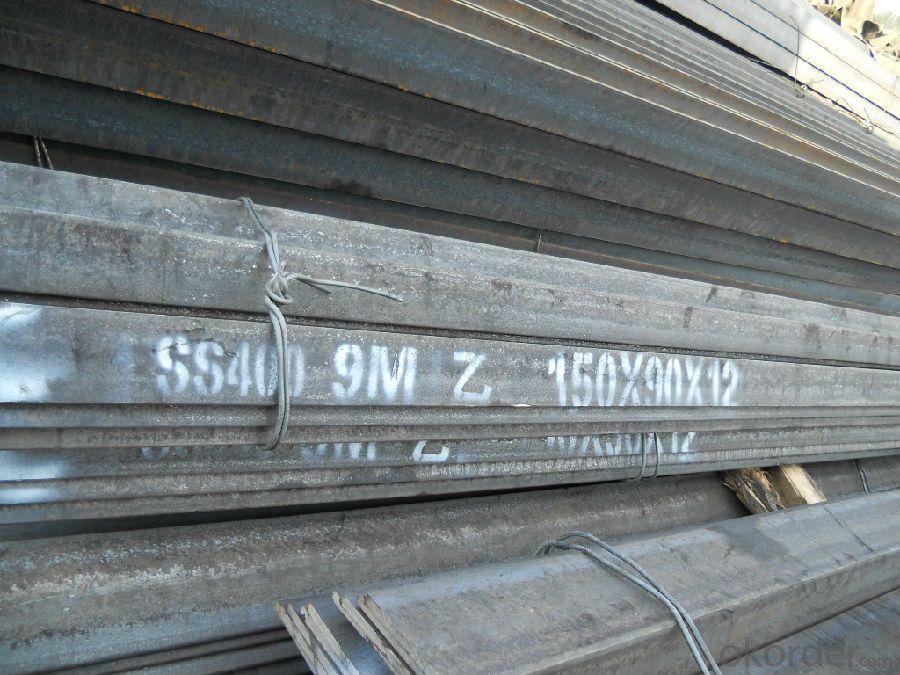
- Q: Can steel angles be used for manufacturing support brackets?
- Yes, steel angles can be used for manufacturing support brackets. Steel angles are commonly used in construction and manufacturing industries due to their strength, durability, and versatility. They provide excellent support and stability, making them ideal for creating brackets that can withstand heavy loads and provide structural support.
- Q: Can steel angles be used as lintels?
- Yes, steel angles can be used as lintels. Lintels are structural elements that provide support over openings such as doors and windows, and steel angles are commonly used due to their strength and load-bearing capabilities. They can effectively distribute the load of the structure above the opening and ensure the stability and integrity of the building.
- Q: What are the different surface finishes available for painted steel angles?
- There are several different surface finishes available for painted steel angles, depending on the desired aesthetic and functional requirements. 1. Smooth finish: This is the most common surface finish and provides a smooth and even appearance. It is achieved by applying a coat of paint evenly over the steel surface, followed by a curing process to ensure durability. 2. Textured finish: Textured finishes provide a rougher surface with a pattern or texture. This can be achieved through different techniques such as sandblasting or using textured paint. Textured finishes can enhance the grip and make the steel angle less slippery, making it suitable for applications where traction is important. 3. Matte finish: A matte finish has a low sheen or gloss level, resulting in a non-reflective surface. This finish is often preferred for applications where a more subdued appearance is desired. 4. Glossy finish: A glossy finish, on the other hand, has a high sheen or gloss level, providing a reflective and shiny surface. It can give a more polished and visually appealing look to the painted steel angle. 5. Powder-coated finish: Powder coating is a popular method for providing a durable and long-lasting surface finish. The steel angle is first coated with a dry powder, which is then cured under heat to form a hard and protective layer. Powder-coated finishes offer excellent resistance to scratches, chemicals, and UV rays. 6. Galvanized finish: Galvanization is a process in which a layer of zinc is applied to the steel surface, providing corrosion resistance. While galvanized steel angles are not typically painted, they can be painted over if desired, allowing for various color options. In summary, the different surface finishes available for painted steel angles include smooth, textured, matte, glossy, powder-coated, and galvanized finishes. The choice depends on the intended use, desired appearance, and the level of durability required for the application.
- Q: Can steel angles be used for framing or supporting suspended ceilings?
- Yes, steel angles can be used for framing or supporting suspended ceilings. Steel angles provide excellent structural support and can be easily attached to the walls or ceiling to create a sturdy framework for suspended ceilings. They are commonly used in construction and are known for their strength and durability, making them suitable for this purpose.
- Q: What is the typical thickness of a steel angle?
- The typical thickness of a steel angle can vary depending on the specific application and the required strength. However, in general, steel angles are available in a range of thicknesses starting from 1/8 inch (3.18 mm) and can go up to 3/4 inch (19.05 mm) or even thicker. The chosen thickness will ultimately depend on factors such as the load-bearing requirements, structural design, and the desired level of durability.
- Q: What are steel angles?
- Steel angles are L-shaped structural components made from steel, typically used in construction and engineering projects. These angles have two perpendicular legs that provide strength and stability, making them suitable for various applications such as supporting beams, framing structures, and reinforcing corners. Steel angles come in different sizes and thicknesses to meet specific project requirements and can be easily welded, bolted, or screwed into place.
- Q: Can steel angles be used in stair construction?
- Yes, steel angles can be used in stair construction. Steel angles are commonly used as structural elements in staircases to provide support and stability. They can be used as stringers, which are the main load-bearing components of a staircase, or as brackets and supports for treads and handrails. Steel angles are known for their strength and durability, making them suitable for use in stair construction to ensure the safety and longevity of the staircase.
- Q: How do you specify steel angles in a construction project?
- When specifying steel angles in a construction project, one must consider their dimensions, grade, and any additional requirements. The dimensions are typically described as the length of each leg and the thickness of the material. For instance, a common specification may be "2-inch by 2-inch by 1/4-inch steel angle". The grade of the steel angle is also crucial to determine its strength and durability. Common grades include A36, A572, and A588. The selection of the grade depends on the project's structural requirements and environmental conditions. Apart from dimensions and grade, any additional requirements like corrosion resistance, fire resistance, or special finishes should be clearly stated. For example, if the steel angles will be exposed to outdoor elements, they might need to be hot-dip galvanized or coated with a protective paint. It is essential to refer to relevant codes and standards, such as the American Institute of Steel Construction (AISC) manual, for guidance on specifying steel angles in a construction project. These codes provide guidelines on allowable stress, design criteria, and other factors to ensure the safe and efficient use of steel angles in structural applications.
- Q: How are steel angles protected against atmospheric corrosion?
- Steel angles are protected against atmospheric corrosion through various methods such as galvanization, which involves coating the steel with a layer of zinc to create a barrier against moisture and oxygen. Other protective measures include applying paint or other protective coatings to the surface of the steel angles, which act as a barrier against the corrosive elements in the atmosphere. Regular maintenance and inspection also play a crucial role in identifying and addressing any signs of corrosion, ensuring the longevity and structural integrity of the steel angles.
- Q: How are steel angles protected against rusting?
- Steel angles are protected against rusting through a process known as galvanization. Galvanizing involves coating the steel angles with a layer of zinc. This zinc coating acts as a barrier between the steel and the surrounding environment, preventing moisture and oxygen from coming into contact with the steel surface. As a result, the steel angles are protected from rusting. Galvanized steel angles are commonly used in outdoor applications or in environments where they may be exposed to moisture, such as in construction, infrastructure, or manufacturing industries. Additionally, regular maintenance and proper storage of steel angles can also help prolong their protection against rusting.
Send your message to us
High Quality Hot Rolled Carbon Steel Equal Angle
- Loading Port:
- Tianjin
- Payment Terms:
- TT or LC
- Min Order Qty:
- 20 m.t.
- Supply Capability:
- 1000 m.t./month
OKorder Service Pledge
OKorder Financial Service
Similar products
Hot products
Hot Searches
Related keywords
